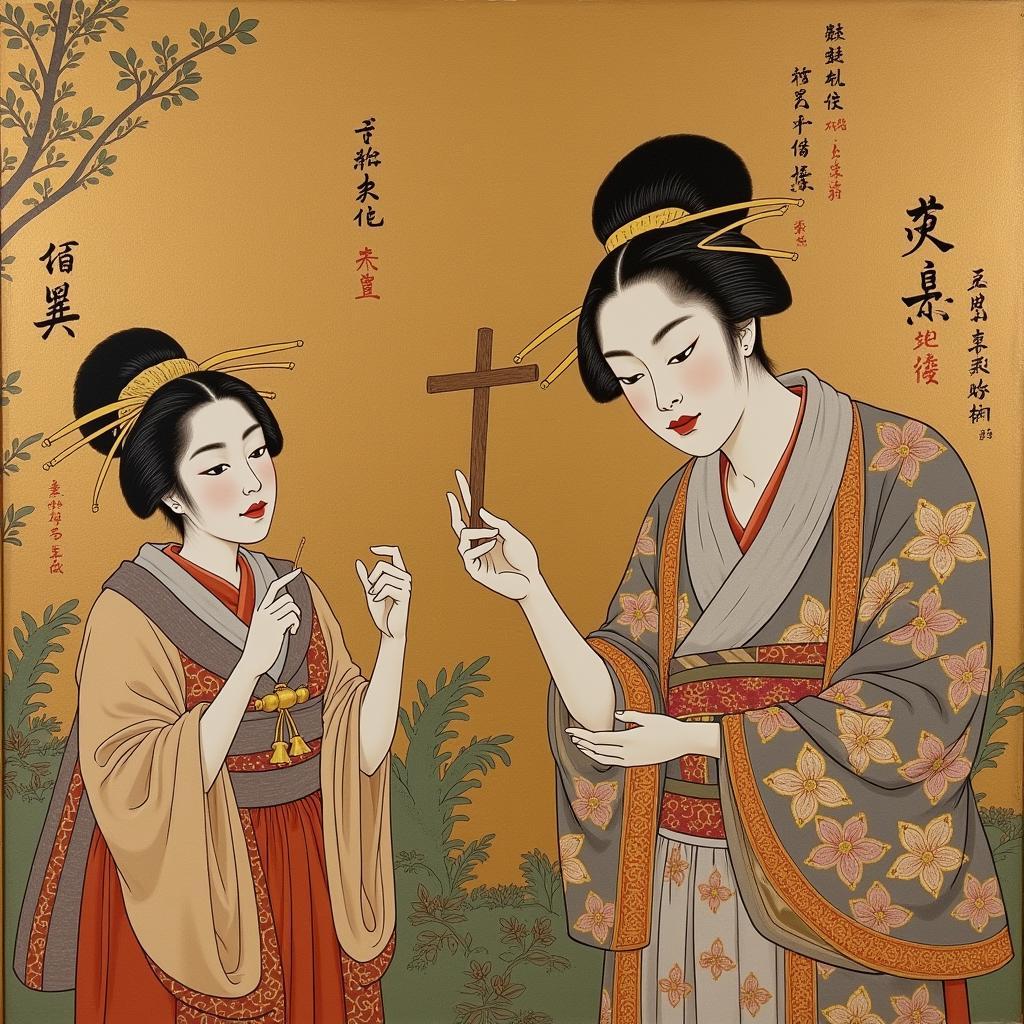Christian missionaries, arriving in Japan during the 16th century, significantly impacted the nation’s society and culture, leaving both visible and subtle marks. Their influence, though complex and at times fraught with tension, shaped aspects of Japanese art, language, and even social structures. Understanding this influence provides a valuable lens for examining Japan’s historical trajectory and its relationship with the West.
The Arrival and Early Impact of Christian Missionaries
The arrival of Portuguese traders in the mid-16th century paved the way for Jesuit missionaries, most notably Francis Xavier, to introduce Christianity. Initially welcomed by some daimyo (feudal lords) seeking trade advantages, Christianity began to spread, particularly in Kyushu and other southern regions. The missionaries’ efforts focused on conversion, education, and social work, establishing schools, hospitals, and printing presses. This introduction of Western knowledge and technology, though tied to religious proselytizing, had an undeniable impact.
The missionaries’ work in translating religious texts and other Western literature contributed to the development of Japanese language and printing. They adapted the Roman alphabet for writing Japanese, a system that still influences transliteration today. Furthermore, the introduction of Western medical practices and social services, while limited in scope, provided new approaches to healthcare and social welfare.
The Suppression of Christianity and its Lasting Legacy
As Christianity gained followers, the ruling authorities grew increasingly wary of its potential to undermine their power and destabilize the social order. Concerns over the missionaries’ allegiance to foreign powers, coupled with internal political rivalries, led to escalating persecution of Christians. The Shimabara Rebellion in the 17th century, though complex in its origins, became associated with Christian dissent, further solidifying the shogunate’s resolve to eradicate the religion.
The subsequent ban on Christianity and the enforced isolationist policies, known as sakoku, dramatically curtailed Western influence for over two centuries. However, the period of Christian presence, albeit brief, left lasting traces. Certain artistic motifs, such as hidden Christian symbols incorporated into traditional crafts, survived underground. Moreover, the memory of the persecuted Christians, often romanticized, continued to be passed down through generations.
 Hidden Christian Symbols in Japanese Art
Hidden Christian Symbols in Japanese Art
Christianity in Modern Japan
With the end of sakoku in the 19th century, Christianity re-emerged, though it remained a minority religion. Its influence in modern Japan is arguably less about widespread religious practice and more about its contribution to social and cultural institutions. Christian-founded schools and universities have played a significant role in modernizing Japanese education. Furthermore, the emphasis on social justice and humanitarian work within certain Christian denominations has resonated with some segments of Japanese society.
“The impact of Christianity in Japan is a story of both suppression and resilience,” notes Dr. Hiroshi Tanaka, a prominent historian specializing in Japanese religious history. “While the number of practicing Christians remains relatively small, their contributions to education, social welfare, and cultural exchange are undeniable.”
How Did Portuguese Influence Japanese Society and Culture?
You might also be interested in exploring the earlier influence of the Portuguese, who first introduced Christianity and Western technology to Japan. Learn more by reading our article on how did portuguese influence japanese society and culture. This exploration provides further context for understanding the complex relationship between Japan and the West.
Conclusion
The influence of Christian missionaries on Japanese society and culture is a multifaceted narrative of cultural exchange, religious persecution, and enduring legacy. While the period of widespread Christian practice was relatively short-lived, its impact on language, art, and social institutions can still be observed today. Understanding this historical interplay offers crucial insights into Japan’s unique cultural landscape and its evolving relationship with the West. How Did Christian Missionaries Influence Japanese Society And Culture? The answer lies in exploring the complex interactions between these two distinct worlds.
FAQ
- When did Christian missionaries first arrive in Japan? (Mid-16th century)
- Who was the most prominent early Christian missionary in Japan? (Francis Xavier)
- Why was Christianity suppressed in Japan? (Fear of foreign influence and social destabilization)
- What is sakoku? (Japan’s period of self-imposed isolation)
- How does Christianity influence modern Japan? (Through educational institutions and social work)
- What lasting impact did Christian missionaries have on Japanese language? (Adaptation of the Roman alphabet)
- What are some examples of hidden Christian symbols in Japanese art? (Specific motifs incorporated into traditional crafts)
Other Questions and Related Articles
- How did the suppression of Christianity affect Japanese art?
- What is the current status of Christianity in Japan?
- How did Western technology introduced by missionaries influence Japan?
For further assistance, please contact us: Phone: 02043854663, Email: [email protected], or visit our office at Zone 34, Bac Giang, 260000, Vietnam. We have a 24/7 customer support team.